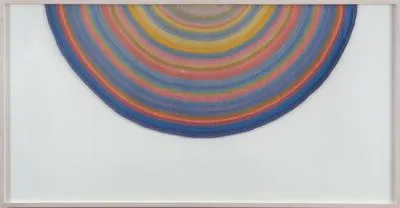
Blanket Statement: 10 Textile Shows, One Museum
Denver Art Museum unites Navajo weavings, Victorian needlework, the original denim, Chinese robes, skinned teddy bears, and a lot more
BY Lamar Anderson
05/08/13
To mark the opening of its new textile galleries, the Denver Art Museum is covering nearly all of its public spaces with fabric, yarn, and needlework. The museum-wide project “Spun: Adventures in Textiles” will bedeck the atrium with a four-story quilt, send a crocheted coral reef snaking through galleries, and culminate in a massive blanket sculpture by Marie Watt.
Made up of ten different shows and launching on May 19, “Spun” explores everything from the color explosions in Navajo weavings to flamboyant Victorian needlework to the start of our long relationship with denim. “Everyone thinks it was the 19th-century American West, with cowboys,” chief curator Nancy Blomberg says of the origin of jeans. “But really it goes back several hundred years to Europe,” to the denim-clad paupers in Northern Italy who populate the 17th-century paintings of an unknown artist dubbed the Master of the Blue Jeans.
In the new textile rooms, the show “Cover Story” considers the role of fabrics as coverings for bodies, interiors, and even animals—such as the bulls in India that wear embroidered cloths embellished with mirrors during festivals (and a discreet rear-end coverlet for modesty). In China, textiles have long featured animals as talismans. A child’s quilt from the late 1900s, for example, is padded with renditions of snakes, spiders, and scorpions to keep evil spirits at bay. A century earlier, during the Qing Dynasty, members of the Chinese royal court wore robes festooned with dragons. “By the number of dragons and the number of claws on each dragon and whether or not they’ve caught the sacred pearl, you can define someone’s rank within the court,” says textile art curator Alice Zrebiec, who organized “Cover Story.”
The contemporary show “Focus: Material World” also points to the stories bound up in fabrics, but emphasizes how artists manipulate everyday objects, from painted canvas to Mylar film to plush toys. For No Rain, No Rainbows (2011), Agustina Woodgate skinned teddy bears and other stuffed animals and wove them into a psychedelic rug. “She’s taking these tear-soaked children’s toys that have this sentimental, historical context to them, and then when you display them on the wall in this Rorschach pattern, they lose that sentimental context,” says associate curator of contemporary art William Morrow.
With a walk-in foam environment by Ernesto Neto and a dangling bed-frame assemblage by Shinique Smith, “Material World” celebrates the playfulness and physicality of fabric. In Lucas Samaras’s Reconstruction #20 (1977), what looks like an abstract starburst of paint from afar resolves into a careful arrangement of sliced and stretched fabric. “At the time it was an effort to put craft on the same plane as fine art,” says Morrow. “That’s maybe passé now, but in the ’70s it was quite charged.”
Copyright 2013, ARTnews LLC, 48 West 38th St 9th FL NY NY 10018. All rights reserved.